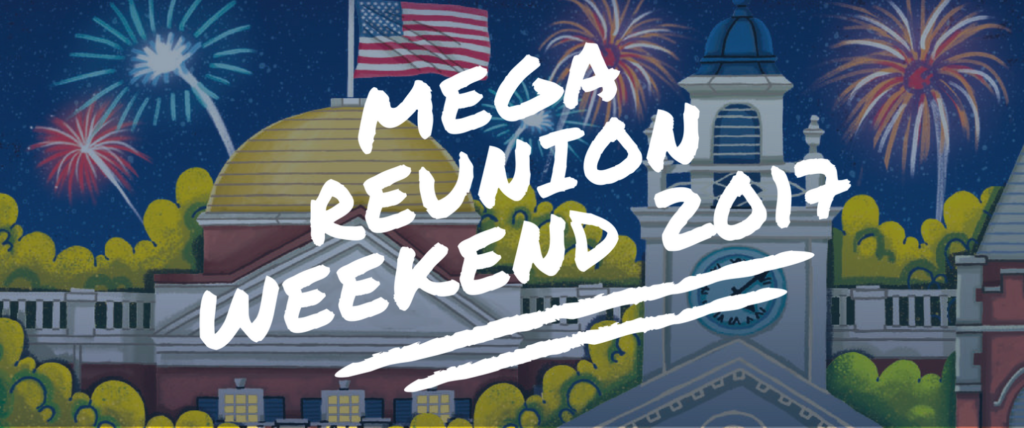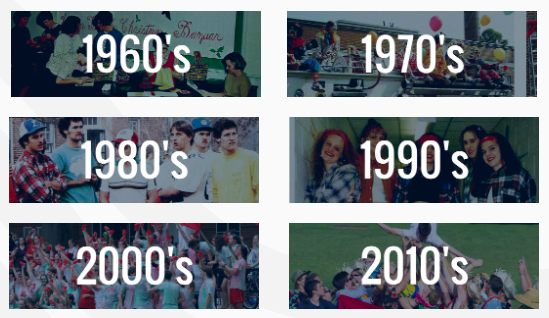The number one thing that alumni anticipate every five years is coming back to campus. They get to reconnect with old friends, relive memories, and check out what’s changed and what hasn’t on their old stomping grounds.
For many institutions, reunions are turnkey. The tradition has been present forever or it fits nicely with an event like homecoming.
But what if you don’t have a strong reunion program? What if you’re in need of a refresh—or even a total rebuild?
Here at Longwood University, that’s exactly the challenge facing our alumni relations team. Longwood has a unique history, and traditionally not much reunion programming has existed until you hit your fortieth year out of school.
Essentially, we’ve been building our reunion program from scratch.
How do we grow reunion from 150 to 1,500 people? Where will alumni stay? What will they do? How will it be received? Our challenges are not unlike those of an entrepreneur building a new company or product—which is why we’ve chosen to approach this process with an entrepreneurial mindset.
Here are the key ways we’ve captured the spirit of entrepreneurship for reunion planning… and how your institution can, too.
Be Resourceful
Like I said before, the reunion blueprint at most institutions is set in stone. At elite private universities, reunions have always been the same way. At large public universities, you combine reunion with homecoming to fill your 65,000 seat stadium.
If your institution is like Longwood, though, you might not have the reunion blueprint, facilities, or resources of those types of schools.
That just means you have to think outside of the box a little. Remember that your alumni can be your best resource when it comes to hiring entertainment, finding lodging, and providing other amenities.
For example, we had to figure out a feasible way to house 1,000-plus people for reunion weekend since Farmville, Virginia only has three hotels where we’d be comfortable having our alumni stay. To combat this, we ended up deciding to hold the reunion in June—when students are away—so we that can make the dorms available for lodging.
Some alumni will still prefer the comforts of a hotel, but this creative approach brings a lot more nostalgia to the event for those who choose the dorms. Not only are we making the most of limited resources, but we’re also helping alumni relive their college years in a very real way.
Do Your Research—and Listen to Your Alumni
For startups, it’s essential to listen to customer feedback in order to improve the product and keep users happy. As Drift put it:
“Whoever does the best job of listening to customers, and understanding customers, and reflecting that understanding in the product is going to win market share.”
That statement is just as relevant to nonprofits as it is to the for-profit realm. Think about it: If your reunion programming doesn’t reflect the expectations and wants of your alumni (aka your customers), why should they make the trip back to campus?
At Longwood, we had the 40-year reunion figured out. It was always a day and a half of activities geared towards women in their mid-60s to 90s. (Longwood was an all-female school until the 1970s.)
Now, however, our alumni population is co-ed and we’re broadening reunion to include young alumni.
Fortunately, our alumni relations team has built relationships with a wide range of alumni who are excited to share what they’re looking for in a reunion. Through connecting with alumni at our fall events and holding casual conversations, we’ve been able to discuss our plans with them and hear about the types of activities and entertainment that different age groups of alumni would enjoy.
We’re still listening and in the process of developing programming based on insights from alumni. For example, we’ve been able to incorporate the things that alumni love about informal reunions into our big reunion weekend.
While we can’t make all of their suggestions happen, it’s been illuminating to gather feedback with the goal of giving them an amazing experience at reunion.
Sell Your Vision
When you launch a new effort—no matter if it’s a product or an event—you’re going to get a lot of questions and skepticism. Although we’re six months out from the official “launch” of Longwood reunion, we’re already focused on turning people’s concerns into excitement… by pitching our idea.
Our marketing has taken many different forms. We created a dedicated landing page on our website, mailed out unique save-the-dates, and sent teaser emails segmented by class year/decade. We’ve also been pushing out fun content such as videos and blog posts to get the nostalgia flowing.
 Our reunion marketing logo
Our reunion marketing logo
As expected, we’ve faced negativity from a vocal minority. It’s easy to get defensive in these situations, but try to combat these issues with positivity. Instead of responding brashly via email, pick up the phone and call an alum who has concerns. Think about the tone of your whole communications flow and how it can be a conduit of positivity.
Building something from the ground up is challenging but rewarding.
No one ever said that planning reunion is easy—even if you’re not building it from scratch. Embrace the challenge and consider it a chance to create meaningful connections with your alumni while turning them into advocates and ambassadors for your programming.
More than anything, bring an entrepreneurial spirit to an opportunity like this. Your energy will be infectious and your attention to detail will be praised.
Go here to learn how EverTrue can help you identify engaged alumni and plan a successful reunion!
Parks Smith is the director of alumni relations and a 2008 graduate of Longwood University. You can follow Parks on LinkedIn or on his Twitter @RVAparks.
